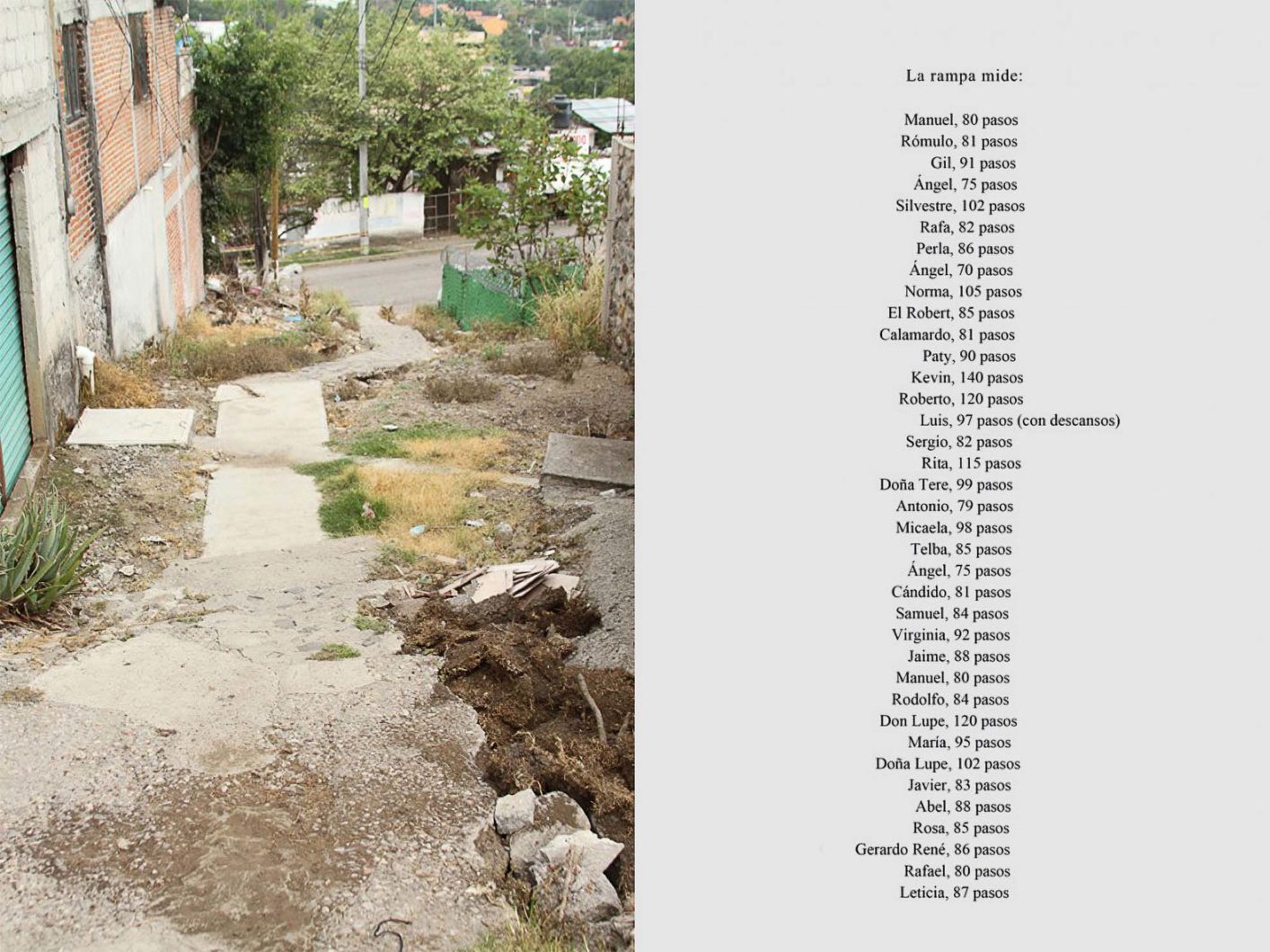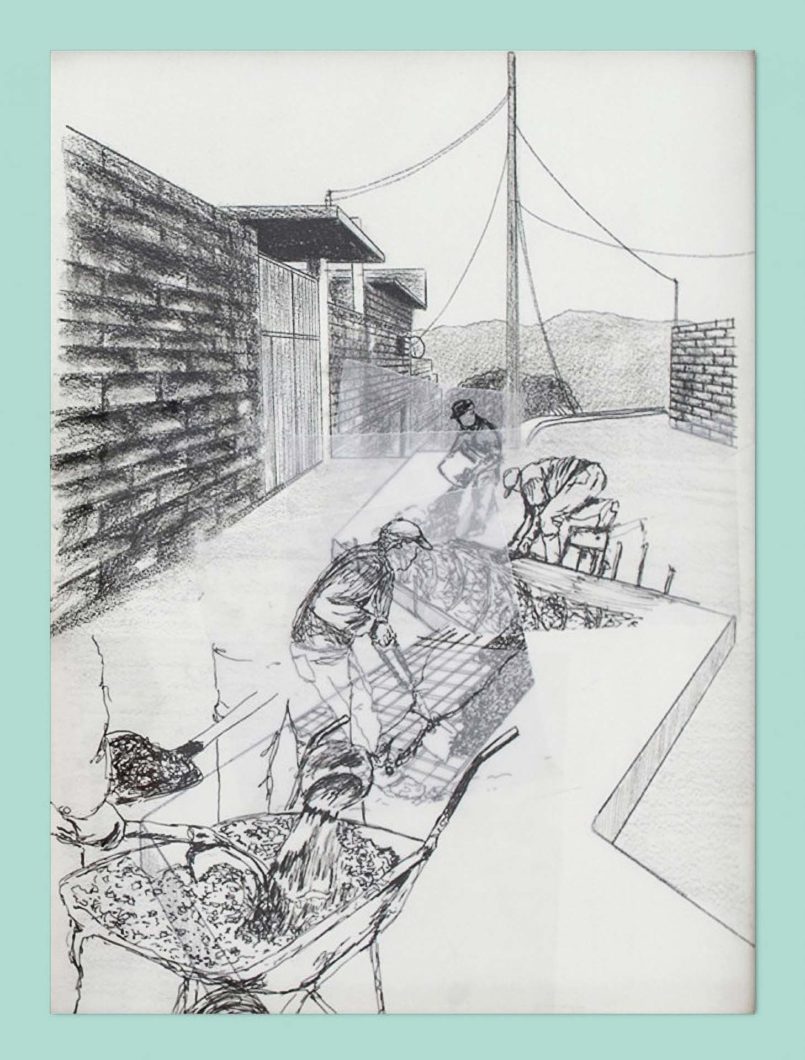Topography in decline (Topografía en declive)
Collective construction of a ramp in public space


Initiator(s)
Inhabitants of Colonia Lázaro Cárdenas
Description
Self-built ramp by the residents of the Lázaro Cárdenas neighbourhood in Cuernavaca, Morelos. It was constructed to point out a new route and make a shortcut road. They traced a line that connects the main avenue with a street situated in a different level to get there faster, to facilitate the walking path, to speed access to the public transport and to communicate both levels. This route is a diagonal line in space that allows a different way.
The ramp was self-built with materials donated by the neighbours, using the surplus from their own construction works. If one of them was building something—their house, a room, the bathroom, stairs, changing tiles, or flattening—and they had some left-over material—stones, cement, or mixture—they used it to build the ramp. The ramp indicates five phases of self-construction, which are clearly identified as you walk along it.
Context
The Colonia was an area of sand mines, in which there is still an active mine where sand is extracted. The extraction has generated dangerous consequences for the stability of the soil and the constructions in the area, with the risk of landslides and collapse of the houses during the raining season. The context of the Lázaro Cárdenas colony became a silent but imposing sign of the exploitation of natural resources and the work of the inhabitants of the area.
Goals
- Continue the ramp with neighbours’ strategies: collection, extraction, and reuse of construction materials.
- Reading the public space when it appears clumsy, almost invisible, or imperceptible from a communicative, cumulative, material ramp that echoes in contradictions, imaginations and survivals.
- Construct an exchange of meanings in the public space, based on perception and reflection, to build history of past events and those that are waiting to happen as a collective and participatory creation.
Beneficial outcomes
- Implementation of an alternative demonstrating the ability to transform closed and institutional procedures, allowing the construction of more equitable spaces, for use and common good to make public space a place to be.
- Generation of a relationship with the materiality of the place where important knowledge is produced, about self-production and habitable spaces, which allow the consolidation of a sense of citizenship based on community work.
- A revolution in front of urbanization processes, proving the dignity of open and sequential, but not ephemeral, architecture. Generating encounters that truly enable an active transformation and an indelible social mark, which at the local level reveal a long-term commitment.
Location
México
Field
Extractivism, cultural landscape, collective urbanism
Strategy
Use It Yourself, Deactivating (art’s aesthetic function), Hacking, Alternative Economies
Users
Residents of the Lázaro Cárdenas neighbourhood and anyone who is passing through.
Maintained by
Residents of the Lázaro Cárdenas neighbourhood.
Duration
2010 - ongoing
Category
Scientific
Pedagogical
Politics
Urban Development
Economy
Environment
Social






